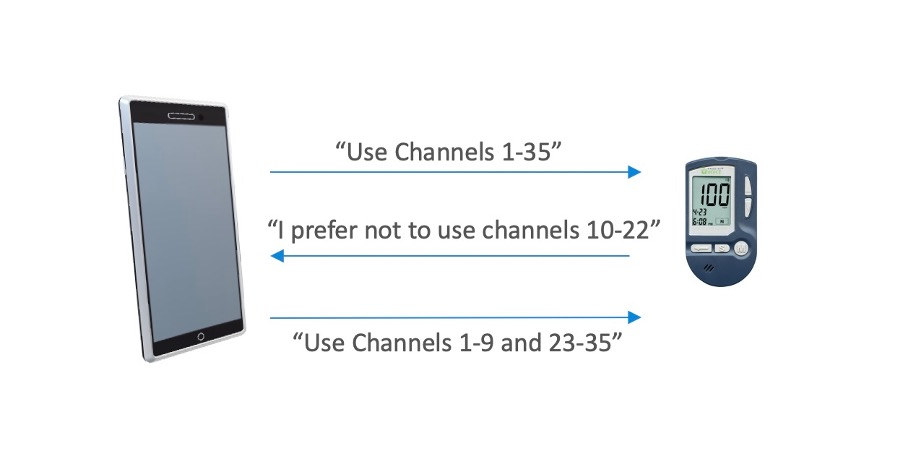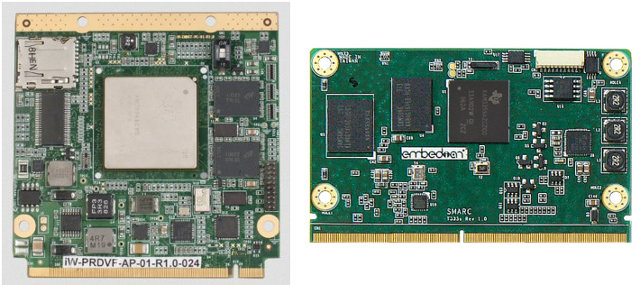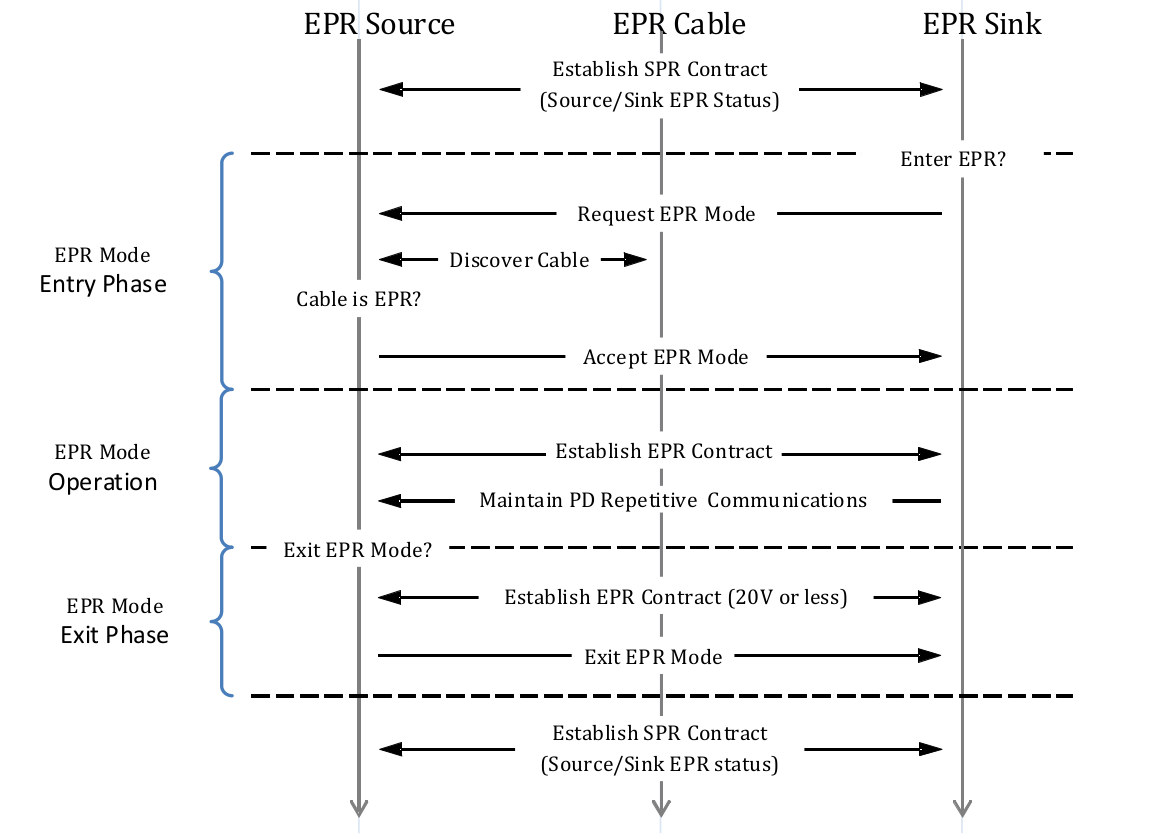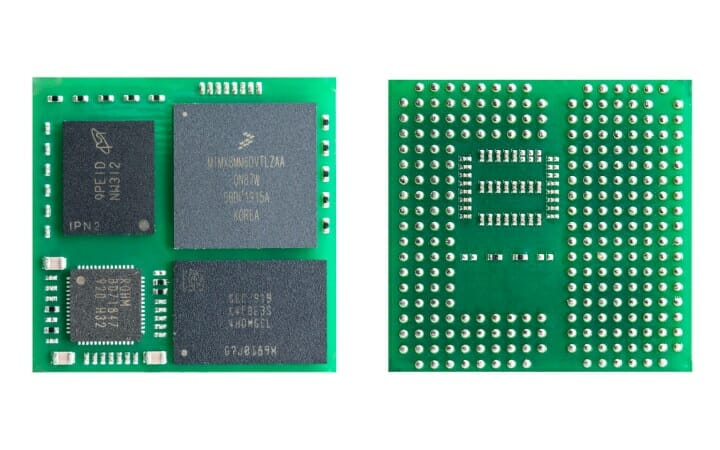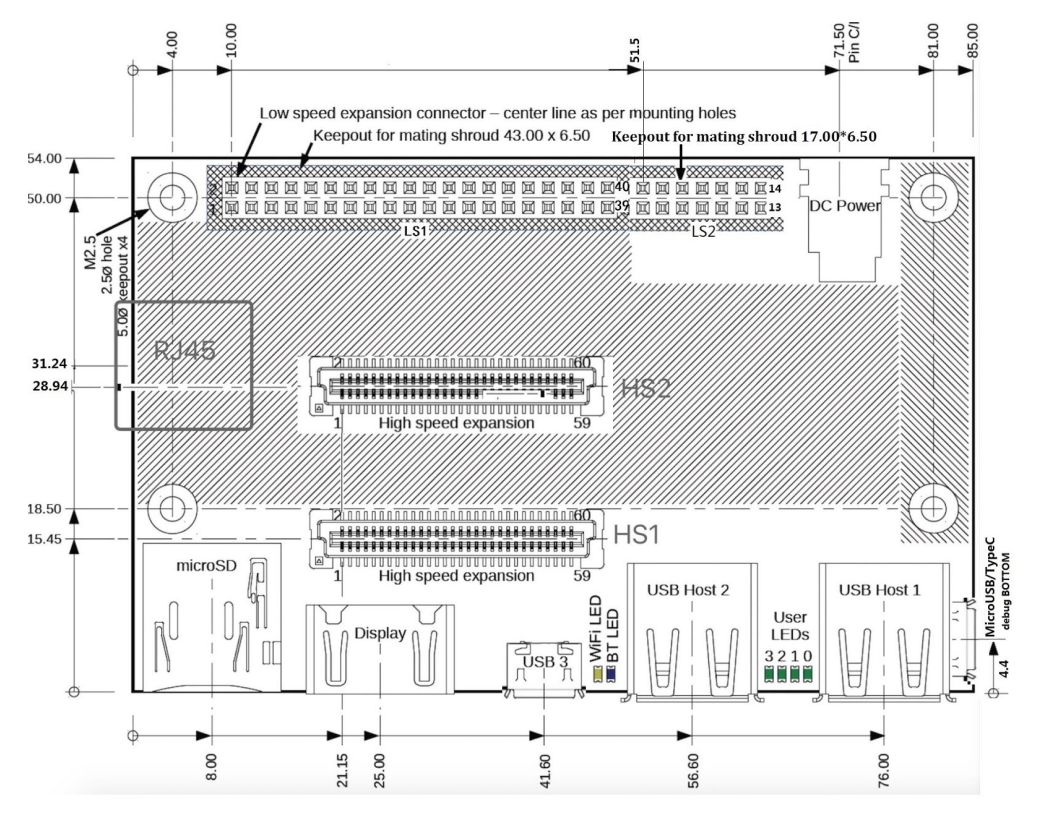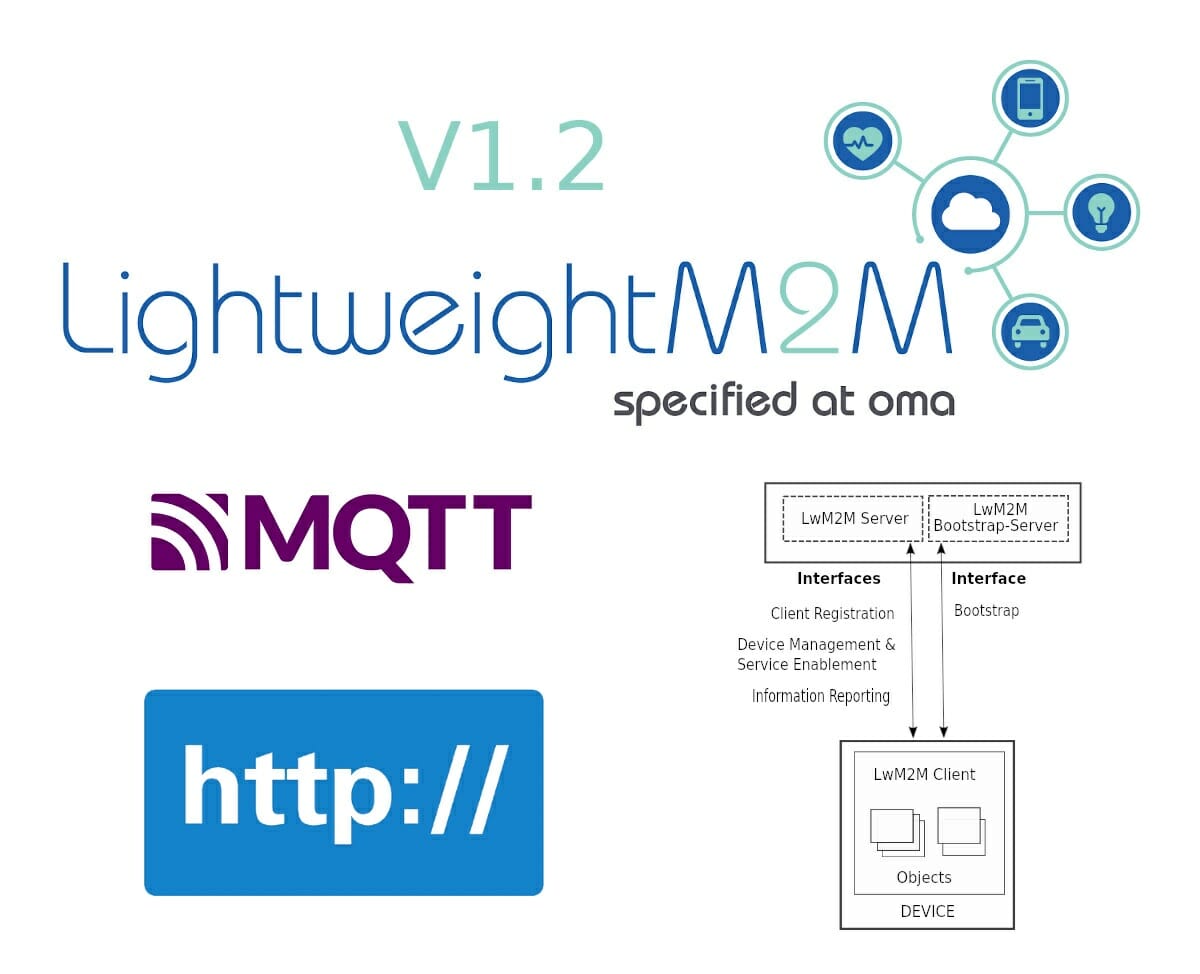Bluetooth 5.3 Core Specification was adopted on July 13, 2021, without fanfare, and the only related announcement that I could find is CEVA RivieraWaves Bluetooth IP getting support for Bluetooth 5.3. Bluetooth 5.3 brings four new features or enhancements and removes one extension from the core specification: Periodic Advertising Enhancement – The AdvDataInfo (ADI) field of the common extended advertising payload format may now be included in AUX_SYNC_IND protocol data units (PDUs) which are broadcast when a device is performing periodic advertising. The Bluetooth Low Energy (LE) controllers may now use the information in the ADI field to recognize packets that contain retransmitted copies of identical or semantically equivalent data, and discard those packets in order to prevent unnecessary processing on the nodes, and make sure the overall throughput is not affected due to retransmitted packets. Encryption Key Size Control Enhancement – In Bluetooth BR/EDR, encryption key sizes are negotiated […]
The RISC-V Platform Specification aims to ensure RISC-V hardware and software compatibility
The RISC-V platform specification aims to define a set of rules to make sure operating systems like Linux or the Zephyr Project can boot properly on all RISC-V hardware compliant with the specs. If you’ve ever worked with the Arm Linux kernel over ten years ago, you may remember board files, which were replaced by device tree bindings, and eventually, Arm defined several standards culminating with Arm SystemReady certifications allowing compliant Arm platforms to boot off-the-shelf OS images like in the x86 world. While we are probably a long way from a “RISC-V SystemReady” platform certification program, the RISC-V platform specification is currently being worked on to define requirements for two types of platforms with optional extensions: OS-A Platform: This specifies a rich-OS platform for Linux/FreeBSD/Windows…flavors that run on enterprise and embedded class application processors. Current extension: Server Extension M Platform – This specifies an RTOS platform for bare-metal applications […]
Overview and List of System-on-Module and Computer-on-Module Standards – Q7, SMARC, COM HPC, and More
A System-on-Module (SoM), also known as a Computer-on-Module (CoM), is a small board with the key components of a computer such as SoC, memory, and possibly others components such as PMIC (Power Management IC), an Ethernet PHY, as well as one or more connectors used to connect to a baseboard, also called carrier board, which features standard ports such as Ethernet (RJ45), USB ports, SATA, power jack and so on. The advantages of using of baseboard + SoM design compared to a single board are at least twofold: Most of the PCB design complexity is often around the CPU/SoC and high-speed buses connected to the CPU/SoC. So you could buy an SoM, design your own baseboard and get a complete design relatively in a short amount of time, with reduced development resources and costs. The design is modular, so you could easily upgrade from one SoM to another one. For […]
USB Type-C Specification 2.1 allows up to 240W Extended Power Range (EPR)
Many devices have switched from a Micro USB port or a power barrel jack to the USB-C port in recent years, as the latter allows for higher currents, and up to 100W power input in USB PD (Power Delivery) compliant systems. While 100W will be more than enough for most devices, more power-hungry devices or systems still need a power brick, for example, gaming laptops and mobile workstations. But the USB Type-C specification 2.1 aims to change that by upping the maximum power to 240W. As noted by Benson Leung in a Reddit Thread the part of the specification that handles the 240W power is the EPR (“Extended Power Range”) that defines requirements for cables, chargers, and devices: 3.11 Extended Power Range (EPR) Cables 3.11.1 Electrical Requirements Extended Power Range cables have additional requirements to assure that these cables can deliver the full defined voltage and current range for USB […]
The Zigbee Alliance renames to the Connectivity Standards Alliance (CSA), Project CHIP becomes “Matter”
The Zigbee Alliance is/was an organization of hundreds of companies creating, maintaining, and delivering open standards for Zigbee… and other Internet of Things (IoT) standards including Smart Energy, Green Power, JupiterMesh, rf4ce, Dotdot, etc… Since the organization does not reflect its involvement beyond Zigbee, the name has just been changed to the Connectivity Standards Alliance (CSA), and while they were at it they also rebranded “Project CHIP” (Connected Home over IP) to “Matter”, maybe because “connectivity standards matter!” 😉 There’s also a new website csa-iot.org but it may not have complete information just yet, and they invite you to access the Full website (https://zigbeealliance.org/about/) for extra details. Nothing much has changed here besides the name. But there’s more to report about Matter. A dedicated website has launched for the new standard, although the code remains under the Project Chip GitHub account at this time. What’s more interesting is that formal […]
SGET OSM (Open Standard Module) compliant SoM features NXP i.MX 8M Mini SoC
The SGET (Standardization Group for Embedded Technologies) non-profit organization ratified another system-on-module standard last November, with the “Open Standard Module” (OSM) standard that instead of relying on edge or board-to-board connectors is meant to be soldered on the carrier board as a solder-on module LGA package. F&S Elektronik has unveiled one of the first SGET OSM compliant SoM with “FS 8MM OSM-SF” equipped with an NXP i.MX 8M Mini processor, up to 8GB DDR4, 32GB eMMC flash or 512MB NAND flash on a 30x30mm “Size-S OSM” form factor. FS 8MM OSM-SF system-on-module FS 8MM OSM-SF module specifications: SoC – NXP i.MX 8M Mini single, dual, or quad-core Arm Cortex-53 processor @ 1.8 GHz with real-time Cortex-M4 core @ 400 MHz, Vivante 2D & 3D GPU, 1080p60 H.265, VP9, H.264, VP8 video decoder System Memory – Up to 8GB LPDDR4 Storage – Up to max. 512MB SLC NAND flash or up […]
96Boards Consumer Edition Specification v2.0 adds Ethernet, PCIe, expansion connectors
Linaro’s 96Boards specification was first introduced in 2015 with the launch of Hikey SBC following 96Boards CE specification, which CE standing for Consumer Edition. The standard would define mechanical, electrical, and software requirements to create an ecosystem of low-cost, expandable, compatible, and well-supported boards. The software requirements were never very well followed, and while the hardware would usually be compliant, some complained about the specifications themselves notably with the lack of Ethernet for the standard version of the 96Boards CE SBC. Linaro has now announced the updated 96Boards CE specification 2.0 that adds ports location for optional Ethernet and PCIe Ethernet connector among other things. The minimum hardware requirements remain the mostly same, except for a few tweaks: Ultra-small low-profile form factor – 85x54x12 mm Extended Version: 85x100x12mm Design is SoC independent (targets 32- and 64-bit SoCs) 0.5 GB RAM (Minimum 4GB recommended for Android) MicroSDHC Socket for up 64GB […]
LwM2M v1.2 M2M & IoT device management protocol adds support for HTTP and MQTT, LwM2M gateways
Lightweight M2M (LwM2M) is a REST-based protocol from the Open Mobile Alliance (OMA) for M2M & IoT device management that defines the application layer communication protocol between an LwM2M server and an LwM2M client running on an IoT/embedded device. While LwM2M v1.0 was published in early 2017, we first covered the new protocol a year earlier as Imagination Technologies released the source code for the LwM2M stack running on MIPS Creator Ci40 development board. Since then we’ve mostly seen the LwM2M protocol supported in cellular LTE IoT modules including Quectel BC66 and u-Blox Sara-R410M, as well as the now-defunct Samsung Artik WiFi IoT modules. LwM2M v1.0 was followed by v1.0.1 and v1.0.2 for bug fixes, and v1.1, but OMA has now announced LwM2M v1.2 protocol that adds the following new features: New transports for LwM2M: MQTT and HTTP Optimizations for the bootstrapping and registration interfaces to reduce the amount of […]


